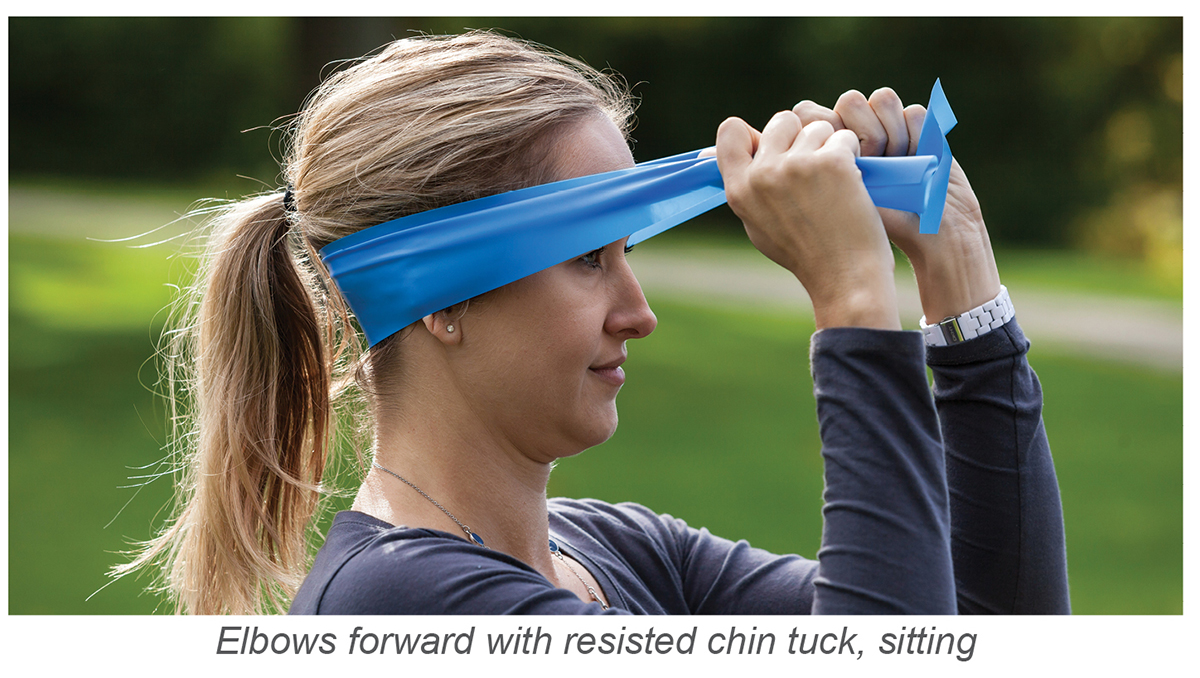Neck Exercises Help Your Headaches
Strengthening, endurance and stretching exercises relieve neck pain. If you can get your neck pain better, neck-generated headaches also are relieved.
Migraine headaches can also get better with neck exercises, even though migraines have other factors involved beyond neck dysfunction. For the large percentage of migraines where neck pain is a factor, improving neck strength and flexibility can take a migraine trigger off the table.
Sticktuitiveness!
Many of my clients, once they have found neck exercises that reduce headaches, have a hard time persisting with the program. You can become a victim of your own success. When your headache episodes ease, your exercise frequency may also ease.
However, the same forces that brought your headache on in the first place are likely still operating. Stress levels may go up. You may make an error and consume the wrong food or beverages such as eating a hot dog or drinking alcohol. Your conditioned neck muscle become weaker again as you slack off your exercises and open the door for the return of your headaches.
One idea that may help you stay on course is to put tiny sticky pads on objects around your house. A reminder pad on your refrigerator, microwave or cupboard cues you to do your exercise.
How Long After Stopping Exercise Do I Lose Strength?
You maintain strength for about three weeks before your muscle strength starts to drop off with inactivity. However, you cannot just do exercise once every three weeks and expect to maintain your headache reduction. Your technique becomes sloppy, and you miss the target muscles, which then become weaker.
A headache/neck pain reduction program will include strengthening the longus colli and capitis muscles in the front of your neck, and the neck extensors in the back of your neck. You want these muscles strong enough to get your neck and head into a better posture. You also want to have high endurance in these muscles to keep the posture correction throughout the day.
Does Forward Head Posture Cause Headaches?
The balance of research suggests that the forward head posture in and of itself does not cause headaches. There is some disagreement in the research about this connection, however.
About two-thirds the population have a forward head posture. So, ask yourself, when can the “abnormal” forward head posture actually be considered to be “normal?”
However, putting aside the posture issue, research indicates that weak neck muscles with poor endurance are associated with increased headaches.
What Is a Good Exercise to Do That Won’t Take a Lot of My Time?
Consider the chin tuck exercise as a convenient exercise to build both strength and endurance in the front and back neck muscles.
First, tuck your chin. Next, place the theraband behind your head. Then, pull forward with your hands as your keep your neck stable. Your neck extensors work isometrically to resist the forward pull of the theraband.
The theraband chin tuck will take you no more than five minutes per session. You can hold the neck in position to fatigue if you like. In addition, you could, for example, do three thirty second holds, easing up on the theraband pull in-between sets.
Be gentle with yourself as you do not want to overload your weak, deep neck muscles. Let them get stronger gradually and avoid post-exercise soreness. Stop the exercise, of course, if you have any unpleasant sensation such as pain or dizziness.
How Often Should I Do the Neck Exercises?
Do the neck chin tuck once a week if your migraines and tension headaches are well-controlled. Do not exercise less than one time a week. Why? People tend to get sloppy on the exercise technique if there is not consistent practice.
If you can manage it, exercise twice per week may be optimal. You gain strength faster than once a week and the exercises become part of your routine.
You may have an immediate drop in headache intensity when doing the theraband chin tuck exercise. Consequently, you should then exercise daily. The theraband exercise becomes your pain pill. Some of my clients take the theraband with them to work and exercise during break time. They can then achieve a day with less headache burden.
A headache reduction exercise program will likely reap welcome rewards in your quest to bring headache relief. Set your exercise frequency and time spent according to your specific goals and motivation level.
–You understand that if not done properly, some techniques and exercises described in this blog could harm you. Any activities you perform are at your own risk, and you expressly agree to waive any claims against the author for any harm that may arise from your own actions. By reading this blog and conducting these exercises, you accept this risk. This blog provides content related to physical and/or mental health issues. As such, your use of techniques described acts as your acceptance of this disclaimer.
-Consult Chapter 2 in my book, “Calming the Headache Storm” to make sure the headache is not the sign of a more serious problem. The techniques, advice and strategies contained in this blog may not be suitable for every individual and should be abandoned if your headache increases. Seek the advice of your physician.
